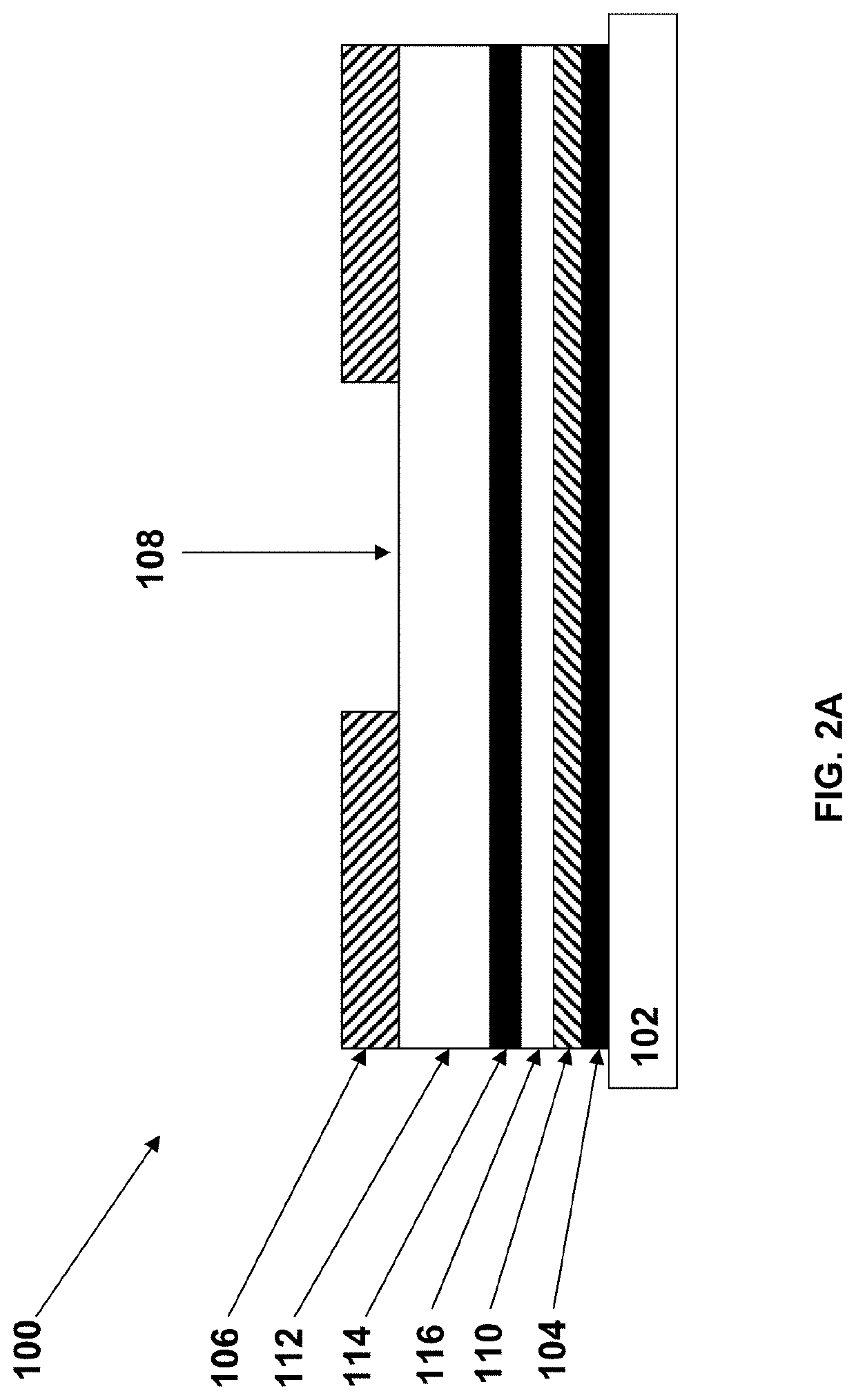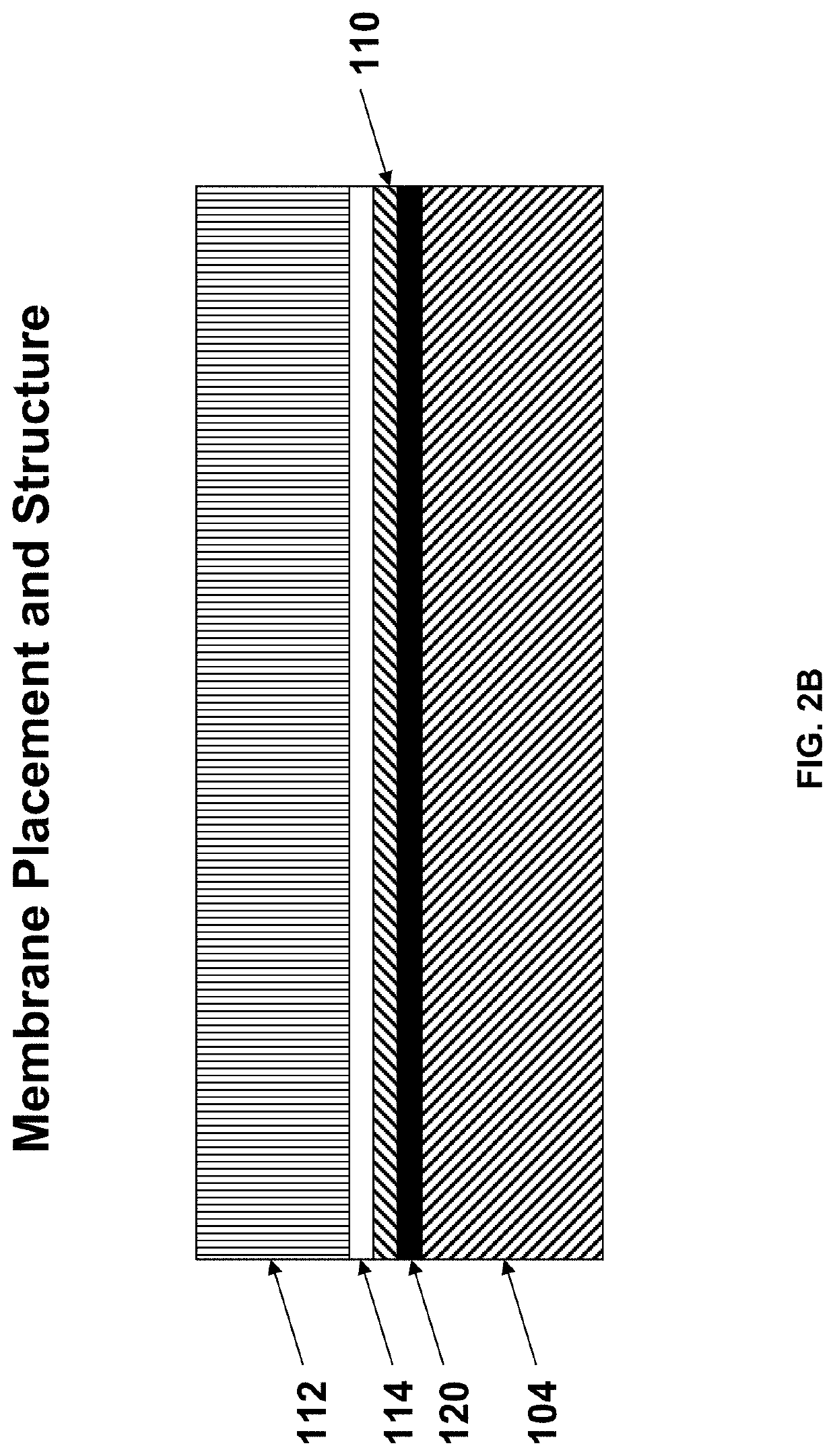Interference rejection membranes comprising crosslinked poly(vinyl alcohol) matrices for implantable glucose sensors
a technology of interfering species and membranes, which is applied in the field of0002analyte sensors, can solve the problems of increasing signal strength due to these interference species, unable to adequately eliminate interference from small neutral molecules such as acetaminophen (mw 150), and direct coating of polymer thin films is normally unable to achieve the effect of reducing interference, improving sensor sensitivity, and good oxygen
- Summary
- Abstract
- Description
- Claims
- Application Information
AI Technical Summary
Benefits of technology
Problems solved by technology
Method used
Image
Examples
example 1
ic Principles and Associated Methods and Materials Useful for Practicing Embodiments of the Invention
[0135]Eliminating sensor signal interference that results from small neutral compounds such as acetaminophen (Mw=151.17 Daltons) is challenging considering their typically smaller size than sensed analytes such as glucose (Mw=180.15 Daltons). While the use of polymer(s) thin films in sensors has been attempted in the art, eliminating interference remains problematical because of such film's insufficient density (even if using a very high molecular weight polymer). In order to keep sensor signals at a high level and quick start-up properties, membrane structures used for interference rejection should be extremely dense and hydrophilic.
[0136]As disclosed herein, a direct thin film coating followed by a crosslinking of hydrophilic polymer system is an ideal option when considering the requirements listed above.
IRMs Useful in Anayte Sensors
[0137]In typical sensor designs, glucose reaches...
example 2
r Performances
[0149]FIG. 5A provides graphs illustrating the in vitro performance of sensors, depicting buffer test system (BTS) results with (right panel) or without (left panel) an interference rejecting membranes (IRM). FIG. 5B provides graphs illustrating the in vitro performance of sensors, depicting sensor in vitro test system (SITS) results showing how one can modulate the O2 effect using differing glucose limiting membrane (GLM) formulations. These graphs of data in FIGS. 5C and 5D show that interference rejecting membranes of the invention exhibit a lower O2 effect, a property that results in increased sensor accuracy.
[0150]FIG. 6 depicts in vivo sensor performance results on a canine model based on the E2 substrate with M1 IRM formulation. These results show that this group has good interference rejection characteristics and fine O2 effect even under a 0.1% O2 tension test. These results also demonstrate impressive in vivo performance. Isig level is consistent with BTS res...
example 3
ormulation M8
[0153]This example describes one embodiment of the invention, M8 IRM formulation. Formulation M8 comprises 5 g PVA (Kurrary™ R1130) aqueous solution (5%) with 0.8 mL SSA solution (10%, diluted from a stock solution of Sigma-Aldrich™). The solution was applied over a plate and spin coated at a speed of 400-1200 rpm (which depends on the surface roughness), resulting in a membrane thickness from 0.3-2 μm. Optimal membrane thickness is 0.4-0.8 μm. The membrane was dried before putting into a 130° C. oven and baked for 42 minutes. After baking, plates were cooled to room temperature and rinsed with H2O, followed by a rinse in bicarbonate buffer (pH 7.2-8.0) for 15 minutes and a final rinse again in H2O to remove all of the non-crosslinked SSA for good biocompatibility. This silanol functional PVA has a high molecular weight (Mw).
[0154]Other commonly used nonfunctional PVAs can still be used as IRM, however the interference rejection efficiency or consistency is found to not...
PUM
| Property | Measurement | Unit |
|---|---|---|
| diffusion coefficient | aaaaa | aaaaa |
| temperature | aaaaa | aaaaa |
| thick | aaaaa | aaaaa |
Abstract
Description
Claims
Application Information
 Login to View More
Login to View More - R&D
- Intellectual Property
- Life Sciences
- Materials
- Tech Scout
- Unparalleled Data Quality
- Higher Quality Content
- 60% Fewer Hallucinations
Browse by: Latest US Patents, China's latest patents, Technical Efficacy Thesaurus, Application Domain, Technology Topic, Popular Technical Reports.
© 2025 PatSnap. All rights reserved.Legal|Privacy policy|Modern Slavery Act Transparency Statement|Sitemap|About US| Contact US: help@patsnap.com



